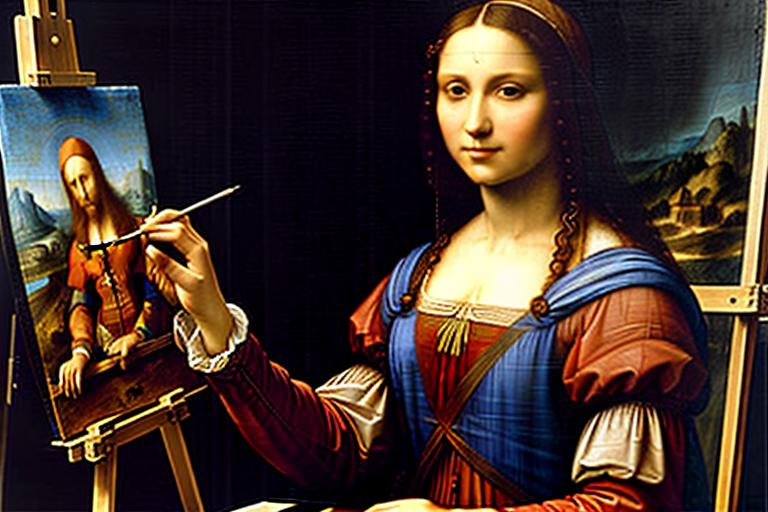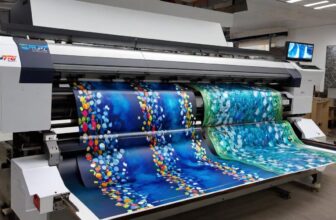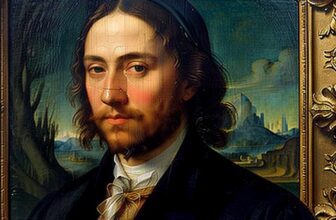
Facts About Renaissance Art and Its Masters
The Renaissance, spanning roughly from the 14th to the 17th century, was a transformative period in European history that marked the revival of classical learning and a renewed focus on art, culture, and human potential. Originating in Italy, the Renaissance rapidly spread across Europe, leaving a profound and enduring legacy. This article explores fascinating facts about Renaissance art and its legendary masters who defined this iconic era.
The Birth of Renaissance Art
- Rebirth of Classical Ideals: The term “Renaissance” itself means “rebirth,” symbolizing the revival of classical Greco-Roman ideals. Artists of this period sought inspiration from ancient sculptures, architecture, and literature, aiming to harmonize these classical ideals with contemporary techniques.
- A Shift in Perspective: One of the most groundbreaking innovations of Renaissance art was the use of linear perspective, which gave paintings a three-dimensional appearance. Filippo Brunelleschi, an architect, and artist, is credited with pioneering this technique, fundamentally changing the way artists represented space and depth.
- Patronage System: Wealthy patrons, including the Medici family in Florence and the Catholic Church, played a pivotal role in fostering Renaissance art. They commissioned works from talented artists, ensuring the proliferation of masterpieces that celebrated both religious devotion and humanist ideals.
- Humanism in Art: Renaissance artists emphasized the human form, portraying individuals with unprecedented realism. This focus reflected the broader humanist movement, which celebrated human potential, intellect, and beauty.
Iconic Masters of the Renaissance
- Leonardo da Vinci (1452–1519)Leonardo da Vinci, often hailed as the quintessential “Renaissance Man,” was an unparalleled genius whose interests spanned art, science, anatomy, and engineering. Some of his most famous works include:
- Mona Lisa: Perhaps the most famous painting in the world, the Mona Lisa is celebrated for its enigmatic expression and masterful sfumato technique, which creates a soft, gradual transition between colors and tones.
- The Last Supper: This mural, depicting Jesus and his disciples during the moment of betrayal, is renowned for its emotional depth and innovative composition.
Beyond his art, Leonardo’s notebooks are filled with sketches and musings that reveal his insatiable curiosity about the natural world.
- Michelangelo Buonarroti (1475–1564)Michelangelo’s mastery extended across sculpture, painting, and architecture, earning him enduring fame. Key highlights of his career include:
- David: This colossal marble statue embodies the Renaissance ideal of human perfection, capturing both physical strength and contemplative thought.
- The Sistine Chapel Ceiling: Painted over four years, this masterpiece features scenes from the Book of Genesis, including the iconic Creation of Adam, where God and Adam’s hands almost touch.
- The Pietà: This moving sculpture depicts the Virgin Mary cradling the lifeless body of Christ, showcasing Michelangelo’s unparalleled ability to convey emotion through stone.
- Raphael (1483–1520)Renowned for his grace and clarity, Raphael’s art epitomized the harmony and balance of the High Renaissance. His notable works include:
- The School of Athens: A fresco that celebrates philosophy and knowledge, featuring iconic figures such as Plato, Aristotle, and a self-portrait of Raphael himself.
- The Sistine Madonna: Known for its serene composition and the cherubic angels at the bottom, this painting remains a timeless symbol of divine beauty.
- Titian (c. 1488–1576)As one of the leading figures of the Venetian school, Titian excelled in color and portraiture. His works, such as Assumption of the Virgin and Venus of Urbino, showcase his vibrant palette and masterful use of light.
Revolutionary Techniques and Themes
- Oil Paint Revolution: Renaissance artists began using oil paints, which allowed for greater detail, richer textures, and vibrant colors. This medium enabled them to create lifelike depictions that had previously been unattainable.
- Chiaroscuro and Sfumato: Artists like Leonardo and Caravaggio utilized chiaroscuro (the contrast of light and shadow) to add drama and depth to their works. Sfumato, pioneered by Leonardo, created a smoky effect that softened transitions between light and dark.
- Secular Themes: While religious art remained predominant, Renaissance artists also embraced secular themes, portraying mythological subjects, historical events, and even everyday life. Botticelli’s The Birth of Venus is a prime example of a mythological subject rendered with Renaissance elegance.
- Scientific Influence: The Renaissance’s emphasis on science and observation profoundly impacted art. Artists studied anatomy, perspective, and proportions to create works that were both scientifically accurate and aesthetically compelling.
Cultural Impact of Renaissance Art
- A New Standard for Beauty: Renaissance artists redefined beauty, emphasizing symmetry, proportion, and harmony. These ideals influenced not only art but also architecture, fashion, and literature.
- Global Spread: As Renaissance art spread beyond Italy to Northern Europe, it merged with local traditions to create unique styles. The works of Albrecht Dürer and Jan van Eyck, for instance, reflect a fusion of Italian techniques with Northern European detail.
- Art as a Status Symbol: Wealthy individuals and institutions used art to display their power and sophistication. Portraiture became particularly popular, immortalizing patrons in a way that celebrated their achievements and status.
- Education and Legacy: Renaissance art paved the way for future movements, such as the Baroque and Neoclassical periods. It also laid the groundwork for modern concepts of artistic creativity and individual expression.
Fun Facts About Renaissance Art
- Hidden Symbols: Many Renaissance artworks contain hidden messages or symbols. For example, in da Vinci’s The Last Supper, the arrangement of the apostles and the placement of their hands may contain numerical and symbolic references.
- Unfinished Masterpieces: Some of the most famous Renaissance works, such as Leonardo’s Adoration of the Magi, remain unfinished, offering a glimpse into the artist’s creative process.
- Women Artists: While the Renaissance was a male-dominated era, female artists like Sofonisba Anguissola and Artemisia Gentileschi made significant contributions, often overcoming societal barriers to pursue their craft.
- Artistic Rivalries: Intense rivalries existed among Renaissance masters. Michelangelo and Leonardo, for example, were known for their competitive spirit and mutual disdain, despite their shared genius.
- Art and Science Collide: Renaissance artists often doubled as scientists and inventors. Leonardo’s detailed anatomical sketches and Vitruvian Man exemplify the seamless blend of art and science.
The Renaissance Legacy
The Renaissance was more than an artistic movement; it was a cultural revolution that reshaped the course of history. Its art continues to inspire awe and admiration, reminding us of humanity’s boundless creativity and potential. From the meticulous details of Flemish painting to the grandeur of Michelangelo’s sculptures, Renaissance art offers an enduring testament to the transformative power of beauty and knowledge.




